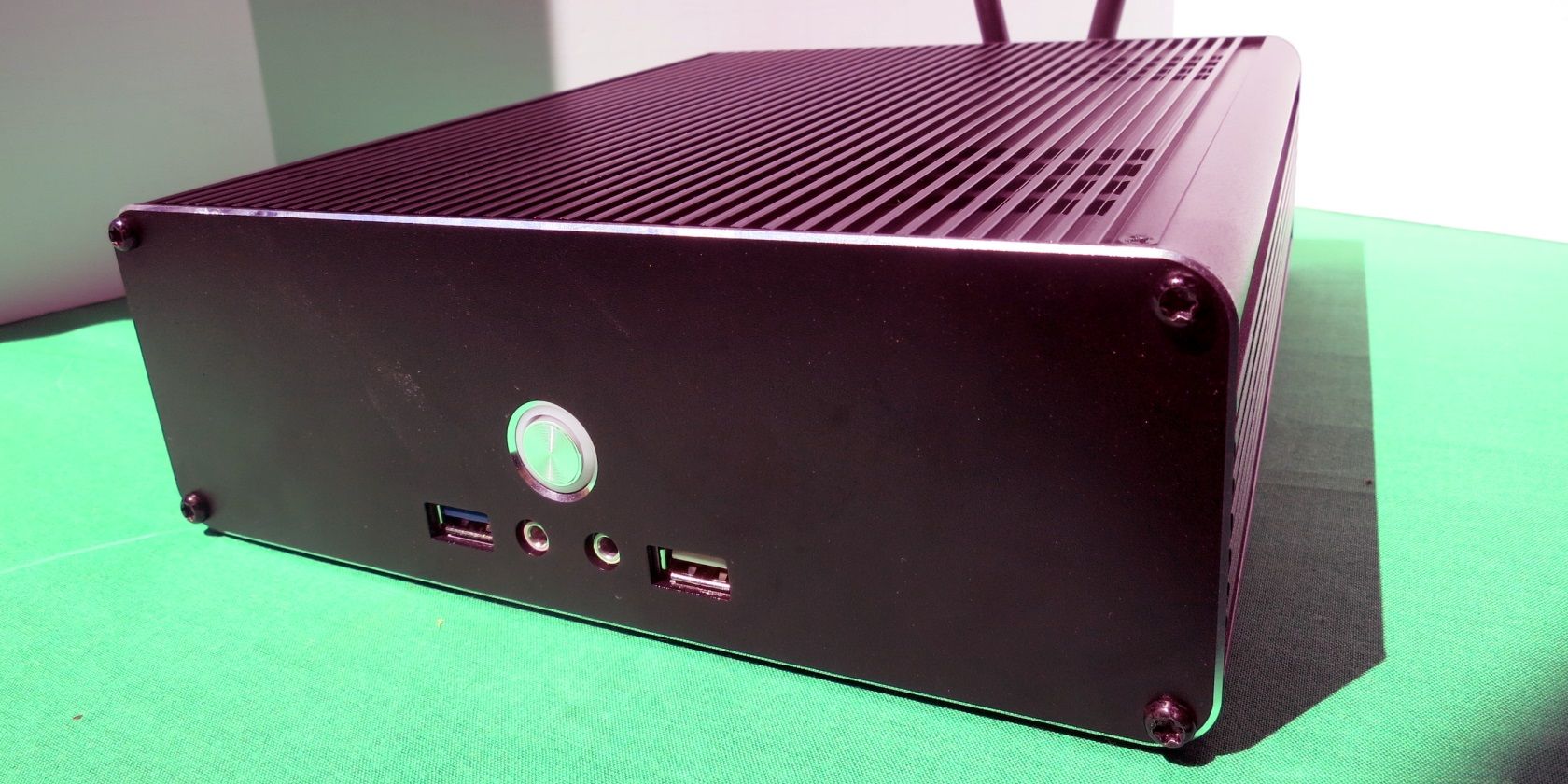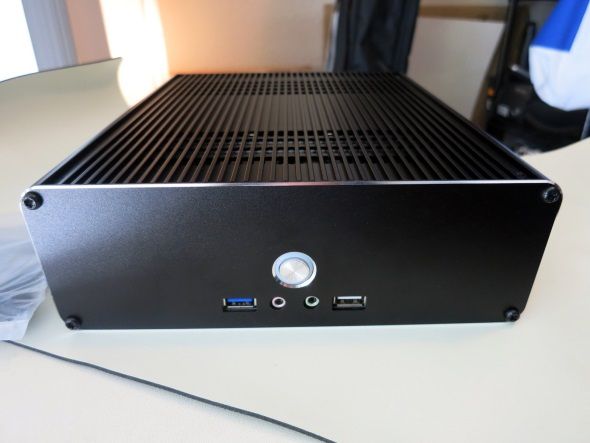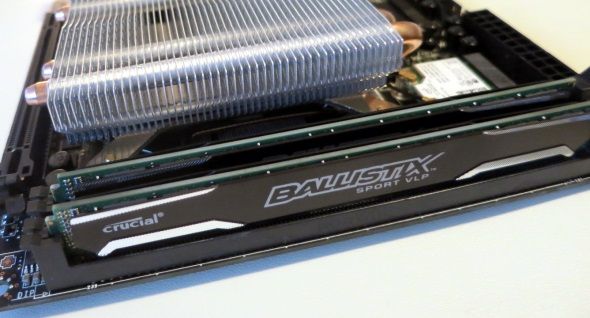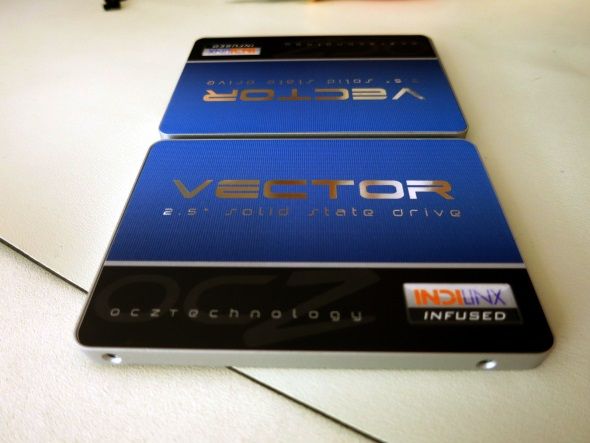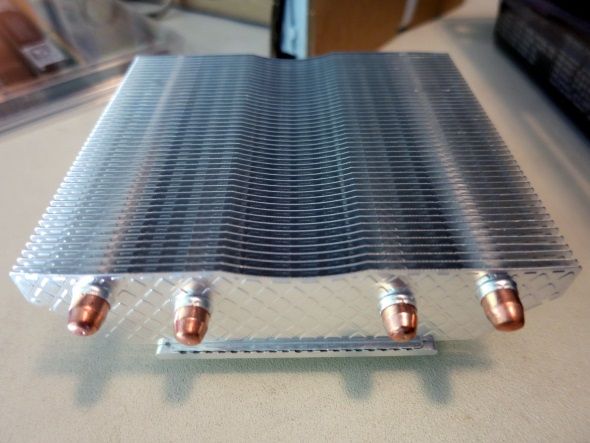Many said it was impossible. Even so, I finished building a highly efficient computer that didn't use fans.
The PC's design emphasizes low-wattage, power efficiency, fanless construction, compact size and excellent processing power per watt. I have been told that such a build was impossible, but ignored good advice and soldiered on. My final build took two years of planning, budgeting and research.
This article delineates the build options, construction process and performance of my custom build.
Planning and Requirements
I wanted my new computer build to fulfill several criteria:
First, I wanted it to be extremely power efficient, meaning it should use a power supply with well above 90% efficiency at load. Second, it should be VESA-mountable, meaning it should fit on the back of a standard monitor or television. Third, it should provide excellent performance-per-watt. Fourth, I wanted to use two solid state drives in a RAID 0 configuration. SSDs within a RAID 0 double already lightning fast performance.
Any of these features, individually, shouldn't require a great deal of effort to properly build around. However, all of these features in the same computer required a great deal of planning and research. After all was said and done, I had a great deal of worries (rightfully so) about passively cooling the CPU, even though it was only 35 watts.
My final build attempts to shoe-horn a Core i7 into a tiny box, just large enough to hold a mini-ITX motherboard.
My Fanless Core i7
The final product uses a very small form factor case with low wattage internal components.
CPU
I went with a special low-wattage quad core version of the Haswell Core i7-4000 series: The Core i7-4765T. It consumes 35 watts at maximum draw, which makes it among the most power-efficient desktop processors ever sold by Intel. It's a "tray" variant on the much faster Core i7-4770, meaning it comes without a heat-sink and fan. It also only sells from special distributors, who frequently apply ridiculous markups, or require about a month to fulfill the order.
The Core i7-4765's lower maximum frequencies allows it to consume 35 watts at load – the tradeoff being that it only has a maximum 2.0 GHz clockspeed and 3.0 GHz, with Turbo Boost enabled. For the curious, Intel's Turbo feature overclocks cores for brief bursts, if there's operational room for the additional heat produced by overclocking.
Case and power supply
Several "carputer" cases existed that could easily fulfill my requirements. These typically only permitted a single 2.5-inch drive – unfortunately, I needed to fit two 2.5-inch drives.
After a great deal of waiting, China-based Realan came out with a case meeting my requirements. The Realan E-K3i mini-case – sold by the excellent US importer EcoSmartPC – combines a 96% efficient 120 watt power supply with a tiny mini-ITX form factor. It includes a VESA mounting bracket and a very high build quality.
RAM
I went with Crucial's low voltage, low-profile variant of the Ballistix line. It uses 1.35 volts – this actually doesn't help much with keeping the wattage low. It did, however, save a great deal of precious space inside my tiny case.
Hard drives
I've always liked the snappiness of solid state drives. In my particular build, I went with two RAID 0 OCZ Vector drives. They rank among the fastest SSDs around and in tandem provide ridiculously fast performance. For those not in the know, RAID 0 combined with SSDs allows near doubling of write and read speeds.
Heat sink
The lowest profile heat sink I could find was the Evercool HPL-815. The heat sink, without the fan, is 31 mm tall, making it the lowest profile cooler I could find. Although a salesman claimed that the HPL-815 can cool a 35 watt CPU passively, I remained skeptical, given that a heat-sink four times its size could only reliably cool a 65 watt CPU, without a fan.
Motherboard
I went with an MSI z87i mini-ITX motherboard. While MSI isn't known for leading the pack in quality, they have an excellent reputation for offering value. This particular board was the cheapest Series-8 Z87 board in its form factor around. It also had the lowest wattage requirements out of all the Z87 motherboards currently being sold.
Construction Process
First things first, I had to get out the anti-static pad and bracelet to prevent accidentally zapping my computer components.
Second, as with all SSDs, you should consider upgrading the firmware on the drives before installing the operating system. The two 128GB OCZ Vectors suffered from numerous teething troubles, despite a biblically long, 5-year warranty. Fortunately, OCZ eventually provided a firmware update kit, which easily updated the Vectors, without any issue. The proper setup and maintenance tips for SSDs will help maintain your drive's performance and longevity. For most buyers, you should check to see if your drive manufacturer provides an firmware update toolkit. If they don't, that's a very bad sign.
Third, I didn't seal the case up and instead left the motherboard anchored to the baseplate of the case. A common suggestion among PC builders is to first test the system to see whether or not it powers on, before screwing it into, and sealing up, the computer. This step saves a great deal of time later on, in case something goes wrong.
Fortunately, nothing went wrong.
Fourth, because my small form factor system doesn't include enough room to use an optical disk drive, I needed to modify a flash drive to contain a bootable copy of the Windows installer. Fortunately, Microsoft makes a utility that will turn either a Windows downloadable ISO or DVD/CD into a bootable flash drive.
The installation process took about 15 minutes. Unfortunately, Windows 8 is an extremely difficult operating system to work with. You may need several hacks to get it working more efficiently.
Performance
In a word: Failure.
While all the individual components in my build worked, attempting to run the computer at full load cause temperatures to slowly rise. Over a ten minute period, the CPU's temperature rose from 60 Celsius to 80 Celsius. With an aggressive underclock, however, the device may run indefinitely.
Another issue that may complicate matters is Haswell's unusually high temperatures. Due to a production flaw, Intel's CPUs run much hotter than had they been designed properly. This may be contributing to the inability to passively cool the CPU.
Conclusion
Trying to build an ecofriendly computer is hard. While you don't need to make it entirely fanless as I did, reducing the ecological impact of your computer by using fewer fans is entirely possible. However, a more viable method is to simply purchase a laptop. While a laptop doesn't match the performance of a desktop Core i7 with SSD drives in RAID array, it can come pretty close while not costing much more.
Anyone else trying to build greener desktops? Please share in the comments.

